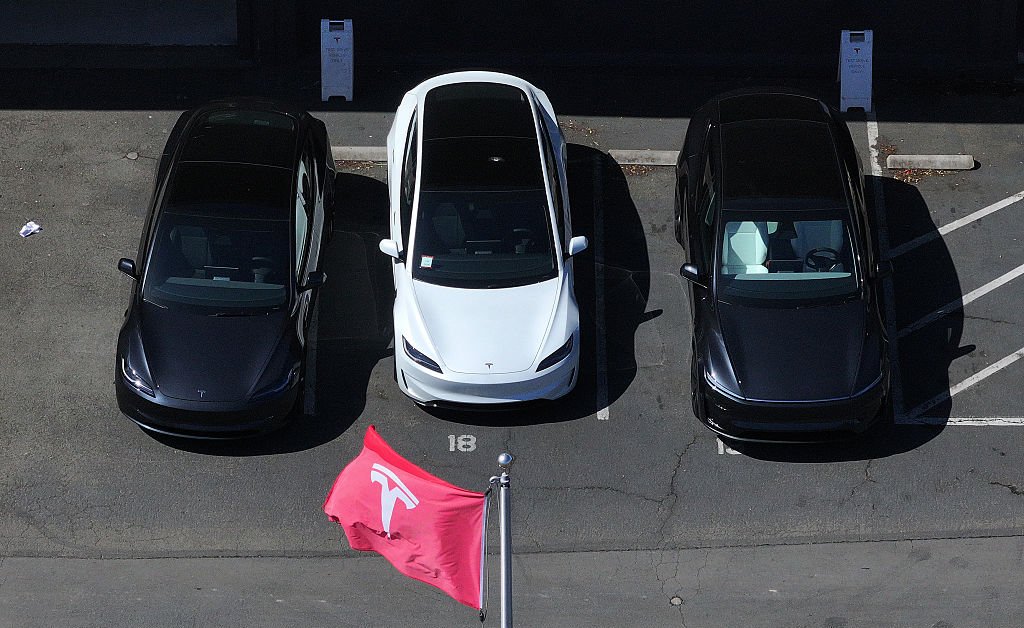Beyond Tesla: The EV Revolution's New Leaders
The electric vehicle (EV) revolution is no longer solely a Tesla show. While Elon Musk's company remains a dominant force, a new wave of innovative automakers and established players are rapidly challenging its supremacy, shaping a diverse and dynamic landscape. This isn't just about competition; it's about accelerating the global transition to sustainable transportation. This article dives deep into the emerging leaders driving this evolution, exploring their strategies, strengths, and the impact they're having on the future of mobility.
The Rise of the Challengers: Who's Competing with Tesla?
Tesla's pioneering efforts undeniably spurred the EV market's growth. However, its market dominance is increasingly contested by a range of competitors, each carving its own niche. These can be broadly categorized into:
1. Established Automakers' Electric Offshoots:
Giants like Volkswagen (with its ID. series), Ford (Mustang Mach-E, F-150 Lightning), and General Motors (Hummer EV, Chevrolet Bolt) aren't just dipping their toes in the EV market; they're diving headfirst. Leveraging existing manufacturing infrastructure, established supply chains, and vast brand recognition, these companies are posing a significant threat to Tesla's market share.
- Strength: Massive production capacity, extensive dealership networks, and brand familiarity.
- Challenge: Overcoming legacy internal combustion engine (ICE) mindsets and adapting quickly to the rapidly evolving EV technology.
2. Dedicated EV Startups:
Companies like Rivian (R1T pickup truck, R1S SUV), Lucid Motors (Air sedan), and Nio (various SUVs and sedans) are demonstrating that dedicated EV players can compete successfully. Their focus solely on electric technology allows for innovation and agility that established players sometimes struggle to match.
- Strength: Cutting-edge technology, innovative designs, and a strong focus on the EV customer experience.
- Challenge: Securing sufficient funding, establishing reliable supply chains, and scaling production to meet growing demand.
3. Chinese EV Manufacturers:
Chinese automakers like BYD (various models spanning multiple segments), NIO, and Xpeng are making significant global inroads. They benefit from a burgeoning domestic market and government support, often offering competitive pricing and advanced features.
- Strength: Aggressive pricing strategies, innovative battery technology, and strong government backing.
- Challenge: Overcoming consumer perceptions of quality and navigating international regulatory hurdles.
Beyond the Models: Key Factors Driving the EV Revolution
The competition isn't just about horsepower and range; it's a multifaceted battleground encompassing:
1. Battery Technology:
The race for superior battery technology is crucial. Longer ranges, faster charging times, and improved battery lifespan are key differentiators. Solid-state batteries promise a significant leap forward, but their widespread adoption remains some years away.
2. Charging Infrastructure:
The availability of convenient and reliable charging infrastructure is critical for mass EV adoption. Companies are investing heavily in expanding charging networks, fostering partnerships, and developing innovative charging solutions.
3. Software and Autonomous Driving:
Software is becoming increasingly important, with features like over-the-air updates, advanced driver-assistance systems (ADAS), and autonomous driving capabilities becoming key selling points.
4. Sustainability and Ethical Sourcing:
Consumers are increasingly concerned about the environmental and social impact of EV production. Companies are focusing on sustainable manufacturing processes, ethical sourcing of raw materials, and responsible battery recycling.
The Future of the EV Landscape: Predictions and Insights
The EV market is poised for explosive growth in the coming years. We can anticipate:
- Increased competition: More players will enter the market, further intensifying the competition.
- Technological advancements: Continuous improvements in battery technology, charging infrastructure, and software will drive innovation.
- Government regulations: Governments worldwide will continue to implement policies to encourage EV adoption and reduce carbon emissions.
- Shifting consumer preferences: Consumers will become increasingly discerning, prioritizing factors like range, charging convenience, and sustainability.
The EV revolution is far from over. While Tesla blazed the trail, the future belongs to a diverse ecosystem of innovative companies, each pushing the boundaries of electric mobility. The race is on, and the winners will be those who can best adapt to the changing landscape, innovate relentlessly, and deliver a compelling customer experience.
